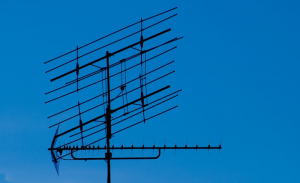Having a TV antenna installed or already have one fitted? Whichever the case, this guide will explain how to find the perfect spot to either set it up or move it to, depending on what case applies to you. We’ll discuss the top tips for choosing the best location. However before we get to that it is worth shopping around for your TV provider, there are many on the market now but do choose one with good signal reliability and if possible a price guarantee for a period of time. While you are doing this, you may even wish to check out the history of TV (particularly cable TV) over on Infinity Dish to learn about this, and what has happened in order to get us to the point where we currently are.
Height is Generally Better
A key factor in the reception quality of your TV will be how far from your antenna/home is from the nearest broadcast tower. However, this can also be affected by the terrain and surrounding buildings and nature, whether it be other houses, trees, bushes, or different buildings. The result of all this is that the height of the antenna is also highly important for how good your TV reception will be.
If you live in a countryside home with open fields and few surroundings, then height would matter less than say in an urban environment. One way or another, there are different ways of getting the ideal height for your TV antenna.
If installing indoors, try setting up the antenna in the attic by a window. You should be aware that items in the attic could interfere with the quality of your coverage. For this reason, you might want to move it around and try different spots in the attic (and again ideally by a window) till you find the area with the best reception.
For an outdoor installation, it should be installed on your roof or the side of your house. You should only do this DIY if you know exactly what is involved and do so in a safe manner. In terms of the safety side of things, one consideration would be that when working on a ladder at a height, you should always have a second person to hold the ladder at the bottom.
Other safety concerns may apply depending on the type of installation in question. Always follow the manufacturer’s instructions. Alternatively, you could hire a professional to do the job for you. A professional may also know how to more precisely choose the perfect location for an outdoor TV antenna on your property beyond the understanding of the average DIYer. Though you would need to consider the TV aerial installation cost too.
Keep it Away from Metal
An additional consideration that may or may not affect where the ideal spot is for your TV antenna is the potential interference of metal. Metallic surfaces that are within proximity of your antenna can interfere with digital signals and may even block coverage entirely.
One example of this would be that metal burglar bars on a window could interfere with the ability of a nearby antenna to receive TV signals properly. You should keep as much distance as you practically can between a TV antenna and metallic objects. In fact, a distance of six feet or more would be preferable. Obviously, you don’t want to run away from metallic objects to such an extent that your TV antenna isn’t even particularly high up. It’s ultimately a balancing act here and hopefully there won’t even be many, if any, metallic objects nearby to cause this issue to begin with.
Other Ways of Improving Your Reception Quality
We’ve looked at the key factors in finding the best location for your TV antenna but there are other ways of generally improving the quality of your TV reception. Let’s take a look at these snippets of advice.
How else you can improve your TV reception:
- Safely align your antenna as accurately as possible (consult a professional if in doubt).
- Ensure your TV is not getting too much signal if, say, in a high signal area and using a built-in amplifier. You could reduce the amplification in this case by adjusting the variable gain control from maximum to minimum. You’d need to scan for TV channels once more after you’ve done so.
- Keep additional cables and wires as far from your antenna as is practically and safely possible in order to avoid interference.
- Consider having a signal booster installed or purchase an amplified antenna if you have issues with a low signal.
- You may want to use a longer antenna cable to reach an attic window. A longer antenna will slightly reduce signal in of itself, but better positioning could mean more signal overall. However, if the cable is too long it would likely mean an overall reduction in TV reception. Again, this would be a matter of a balancing act.
Note: This is a collaborative post



No Comments